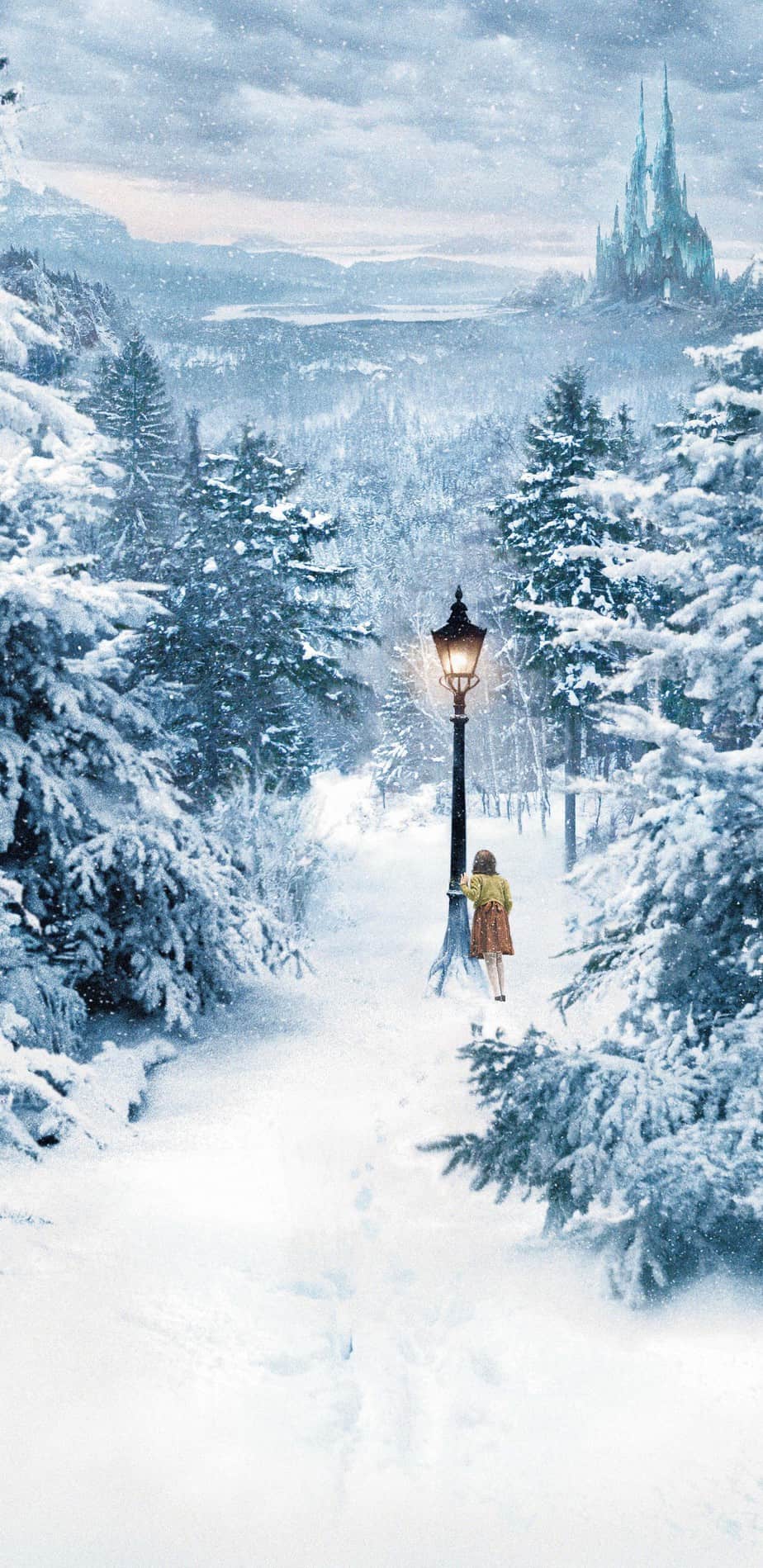So much has been said about Narnia already. Can I add a single thing to the corpus by blogging about storytelling techniques in The Lion, The Witch and the Wardrobe?
Probably not, but my 10-year-old is studying this novel at school. She’s home sick today. I know the rest of her class is watching the 2005 film adaptation this afternoon for a compare and contrast exercise, because they send home permission slips for PG rated material. (Honestly, heh, I showed this to my kid when she was about 5.) It’s been a while since we cracked open the DVD, so today we are rewatching The Lion, The Witch and the Wardrobe, together at home, under a blanket.
This blog post is mainly about the 2005 film adaptation, not about the novel. I haven’t read the novel since I was in my late teens, though I keep meaning to go back. I bought myself a beautiful illustrated version for my 30th birthday. What’s keeping me from dusting it off? Probably all the commentary around it, and knowing how problematic it is as a vehicle for certain ideas.
NARNIA AS A MISOGYNISTIC, RACIST, DOG’S BREAKFAST
Some time ago Francis Spufford, author of The Child That Books Built (among many others), spoke with Kim Hill on Radio New Zealand.
Spufford considers The Chronicles of Narnia the ‘essence of book’. (He went on to write Unapologetic.) As a child, the Christian bits meant least to him, but the allegories weren’t mysterious to a church-going boy. What Spufford loved about Narnia was the sensuousness of it. Looking at it critically from an adult point of view it’s easy to criticise this series as a ‘dog’s breakfast’. (After all, it has water nymphs and Father Christmas in the same world.) But Lewis loved all of these elements and he had the ability to bring his passions to life. No other series delivered a world like those ones did. (A modern audience has Harry Potter for an equally sensuous setting, bringing many different elements together.)
Reading as an adult, Spufford noticed misogyny and racism. The racist elements are easy enough to figure out — Lewis was influenced by Arabian Nights and other things. The author’s feelings about women, on the other hand, are harder to figure out. There are a lot of dangerous snake women who keep popping up in the different chronicles and there are no women (apart from mothers) who are safe, at all. Fantasy is a horribly revealing form. People make fantasy out of the deep material of their imagination. Where did this misogyny come from?
C.S. LEWIS: MISOGYNIST BUT NOT SEXIST
Spufford reminds us that C.S. Lewis’ mother died when he was very young. He adds that it now ‘seems unfair to ask the past to know what the present knows’. I disagree wholeheartedly with Spufford on this point. Missing a mother does not make misogyny. As evidence, I proffer every single misogynist who has a perfectly good mother. Instead, all we need for misogynistic tales to thrive is a misogynistic world. And the 1950s were nothing if not that.
Others make the case that The Lion, The Witch and the Wardrobe is empowering to women. Here’s the argument in a nutshell, from what I can gather:
- Lewis wasn’t making women subservient to men; he was making humans subservient to God. Lewis intends to exalt divinity, not men. (Gah, now that’s a damn stretch.)
- Sure, the bad people in Narnia are women, but bad women are powerful women. (I am on board with this argument. I get this one. We’ll know we’ve reached true gender equality when we see as many flawed women in positions of power as there are flawed men. Unfortunately, we’re nowhere near that point yet. This real world fact means that a preponderance of terrible females in positions of fictional power feeds into the existing idea that women are generally terrible when given any power at all.)
- Susan and Lucy are allowed to be heroines. (Yes, but very specifically female ones. As my ten-year-old said as they laid their heads upon poor, dead Aslan, “Ugh, so they make the girls cry.” Moreover, Lucy is given the stereotypically feminine role of healing, like a wartime nurse.)
- Lewis isn’t ranking masculine coded activities as higher than feminine coded activities. He doesn’t rank Peter’s skill with the sword HIGHER than he rates Lucy’s ability to heal and empathise. (I’ve heard this a lot before, but ranking is beside the point. Simply assigning gender to certain tasks keeps women in their ‘rightful’ place as caregivers, nurturers and providers of emotional labour.)
- All of the main characters in Narnia embody feminine characteristics, because submission (to God) is a feminine coded thing to do. All people are feminine to God. And this is the Christian ideal. (Sure, Peter looks after Lucy’s feelings at times, but on the other hand he’s in a clear patriarchal big struggle with his own brother. Peter is a benevolent sexist, at best.)
- Some have pointed out a difference between ‘classical heroism’ (masculine) and ‘spiritual heroism’ (feminine). These characters go on a spiritual journey, therefore they all go on a feminine journey, rendering gender binaries moot. Some go so far as to say Lewis is even critiquing classical heroism.
- Lewis plays so much with so-called feminine and masculine virtues that we can’t even think of his characters in this binary gendered way. (Yes, this is always a sticking point in such arguments. But people who study this stuff know full well which attributes are coded feminine by the dominant culture and which are coded masculine. People who use this argument are derailing.)
That is not an exhaustive list of the arguments in favour of gender equality in the Narnia Chronicles. Instead, I want to leave you with a quote from Lewis himself:
I do not believe that God created an egalitarian world. I believe the authority of parent over child, husband over wife, learned over simple to have been as much a part of the original plan as the authority of man over beast.
The Weight of Glory, p 168
If you don’t see that exact ideology shining through in The Lion, The Witch and the Wardrobe, I don’t know what to tell you.
Here’s the vital thing to grasp about Lewis and his world view: He didn’t just believe that there is a biological difference between the sexes; he believed there was a spiritual difference as well. To him, femininity represents subjection to God. Men, to Lewis, were literally closer to God. This is still the case for many fundamentalist Christians.
However, C.S. Lewis did believe in political and vocational equality. Donald Trump, by the way, is exactly the same. This is why it’s important to make a distinction between sexism and misogyny. C.S. Lewis, like Donald Trump, was not a clear sexist. He did believe that women were capable of contributing fully to the world (and was happy for women to do just that, recognising that their labours would benefit him). However, he was a keen upholder of the police force of patriarchy, otherwise known as misogyny. For more on this point, I refer you to the excellent book Down Girl: The Logic of Misogyny by Kate Manne, specifically page 89.
SETTING OF NARNIA
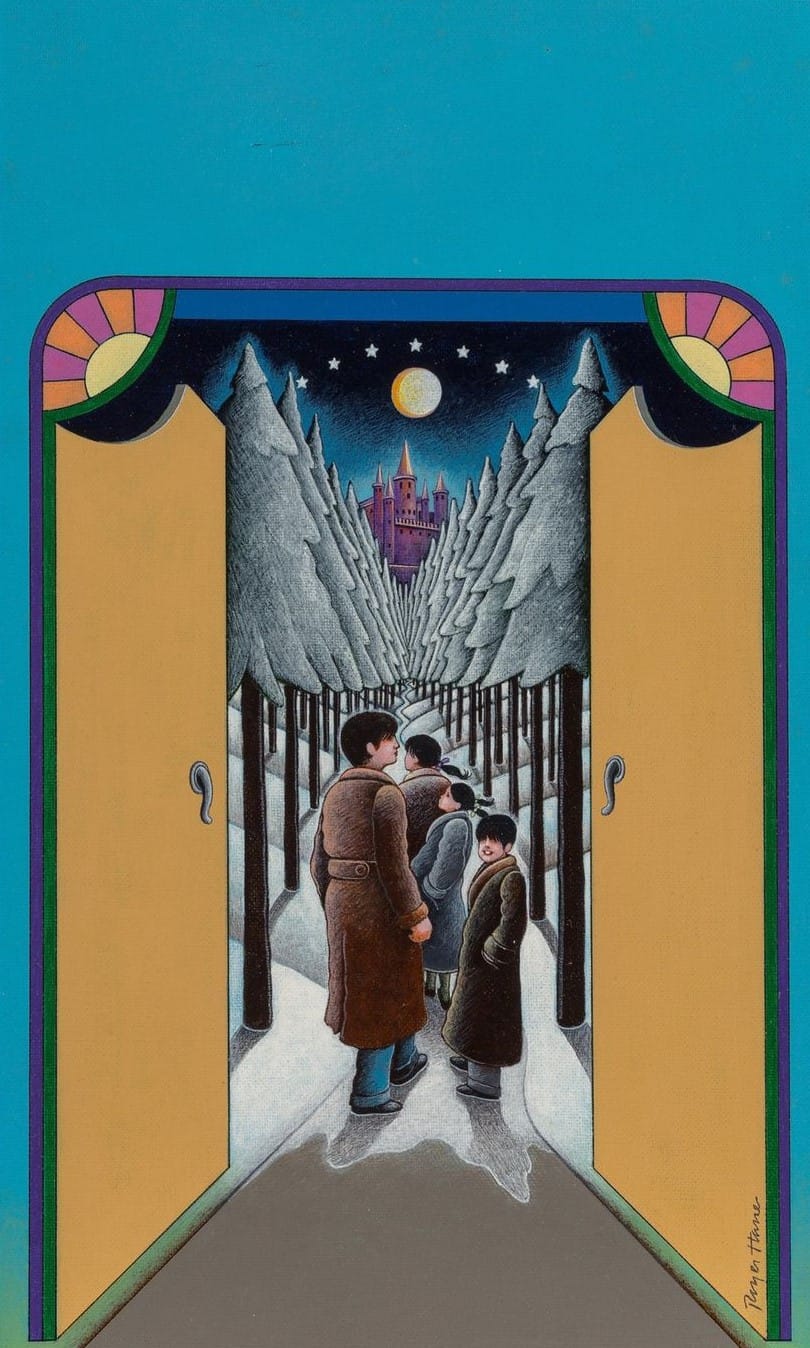
There’s an entire article on the Setting of Narnia at Wikipedia.
Narnia is a quasi-medieval world written in the mid 20th century.
I can’t think of a clearer example of The Symbolism of Seasons in Storytelling. Winter means death, summer means life.
The Lion, The Witch and the Wardrobe is a classic portal fantasy. C.S. Lewis knew to really dwell on the portal. Getting all four children through the portal dominates the first quarter of the story.
C.S. Lewis also made full use of The Symbolism of Altitude, which is not only symbolic but also lends dimensionality to a landscape. Characters go below ground (with the beavers), above ground and high above ground (up trees, on mountains, in a palace).
The 1972 map of Narnia depicts a setting which is mostly forested, except for marshlands in the north. In the Bible, the enemy of God’s people come from the north, bringing destruction. False kings come from the north. See also: The Symbolism of Cardinal Direction.
STORY STRUCTURE OF THE LION, THE WITCH AND THE WARDROBE (2005 FILM ADAPTATION)
The Lion, The Witch and The Wardrobe is your classic home-away-home story with a mythic structure.
SHORTCOMING
The Lion, The Witch and the Wardrobe features an ensemble cast with no stand-out main character. The story crosscuts between Lucy and Edmond, or whoever happens to be the most alone and vulnerable at the time. However, we definitely empathise with Lucy. For my purposes, I nominate Lucy as ‘the main character’. She is also a ‘viewpoint’ character, because when Lucy sees Narnia for the first time, so do we. However, Edmond undergoes the biggest character arc so we could just as easily pick him. (If not more so.)
Lucy’s main shortcoming is that she is the youngest, and therefore expected to be immature and unreliable.
Nobody believes Lucy when she walks through the back of the wardrobe. Honestly, wouldn’t you believe Edmond?
Edmund’s lie of omission, failing to tell his siblings about his encounter with the White Witch, drives much of the drama in the first Narnia story. Interestingly, though, he is probably judged more harshly by contemporary readers than Lewis intended. It is almost impossible, now, to imagine the feelings a child – used to the privations of wartime Britain – might experience on being offered some Turkish Delight. This is one of those occasions where some of the context is lost in the passage of history. If you had grown up with rationing, been shipped out to the country for protection, and found yourself in a magical land where you were offered extraordinary, rarefied sweet things, wouldn’t you lie too?
The Guardian
For more on that, see Liars in Storytelling.
In this new fantasy world she does not understand the threats. Narnia is a fascination to her. This is the shortcoming that could cost Lucy her life.
DESIRE
The Pevensie children stumble into a fantasy world entirely by accident, and as soon as they get there, their mission is to have fun with it. When the learn the stakes, they at first turn down the Call to Adventure (saving everyone from the White Witch), which Joseph Campbell calls Refusal of the Call. It’s mandatory, basically. Against their will, the children are forced to fight on behalf of everyone, proving their mettle.
OPPONENT
Edmond is the black sheep of the Pevensie kids, but I can see why. Peter is so annoying. I call him Patriarchal Peter — we see another identical personality in Peter from Famous Five. “Just do as I tell you! I’m the better-looking, more sensible one!” Peter shames Edmond constantly by demoting him to the status of ‘girl’, first by insulting him during cricket, then by telling him he deserves to wear a girl’s fur coat, as if lying is a naturally feminine attribute. (Highly, highly problematic. It makes my skin crawl.)
The White Witch is your classic Thriller villain — her desire is for power, at whatever cost. She’ll even kill you and your family. She’s almost inhuman, but her logic is understandable to a human audience (she’s not a supernatural horror villain). This makes The Lion, The Witch and the Wardrobe a children’s action thriller, by my reckoning. Within the setting, the White Witch is a descendent of Lilith the ‘Jinn’. In real world, ancient Jewish mythology, Lilith was a female demon, representing all things “dark and terrifying.” In Jewish folklore she was referred to as the first wife of Adam. She left the Garden of Eden because she did not want to be Adam’s wife. (Why ever not?) A ‘jinn’ is a term sometimes used to refer to genies.
C.S. Lewis has included in his character web the entire gamut of familiar opponent (the siblings), really scary new opponent (White Witch), possible opponent (the Professor), annoying adult opponent (the housekeeper) as well as a false-ally (Mr Tumnus), a possible opponent who turns out to be on their side (Aslan) and everything in between. The true goodness of each character is kept as a reveal, as the audience, alongside the characters, work out who is good and who is evil in this strange new world.
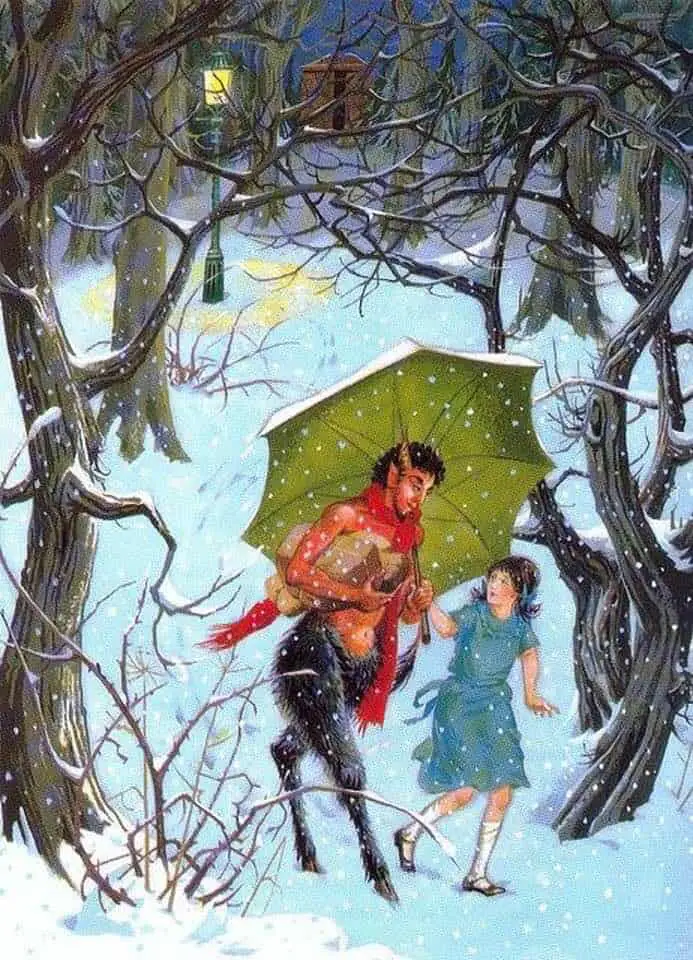
PLAN
In a thriller (yep, I’m sure this is a thriller), the hero (heroes plural in this case) need a special super power to help them overcome their enemy. The Pevensie kids are pretty ordinary but Father Christmas turns up to help them out. He endows them with actual gifts — a sword for Patriarchal Peter, bow and arrow for Susan, healing medicine for Lucy and I’ve completely forgotten what he gave to Edmond, oh well.
(My daughter thought Father Christmas was the Professor. Like me watching Game of Thrones, old men in grey beards all look the same. Are we meant to think the professor is secretly the Father Christmas of Narnia? The Professor portrayed as bafflingly conspiratorial in the film.)
The children are led by their allies, Mr Tumnus (after he turns), by the beavers and so on. The kids just keep ploughing along the path and battling whoever fights them. That’s the big plan. When they find themselves on the throne they aren’t all that surprised — it’s their birthright. (This is a very white story, in more ways than one.)
In this episode of Talk Nerdy, Cara speaks with Ben Goldfarb, environmental journalist and author of the new book “Eager: The Surprising Secret Life of Beavers and Why They Matter.” Ben informs Cara of little-known beaver facts and she admits to having never seen one in the wild! They also talk about the ecological importance of this strange, magnificent creature.
Beavers w/ Ben Goldfarb
BIG STRUGGLE
The Battle scene is hugely elongated in this film and reminds me of the most boring parts of Lord of the Rings (ie. most of it).
I found this image on Comic Vine, so the similarity must be obvious to everyone. (Return of the King came out two years prior.)
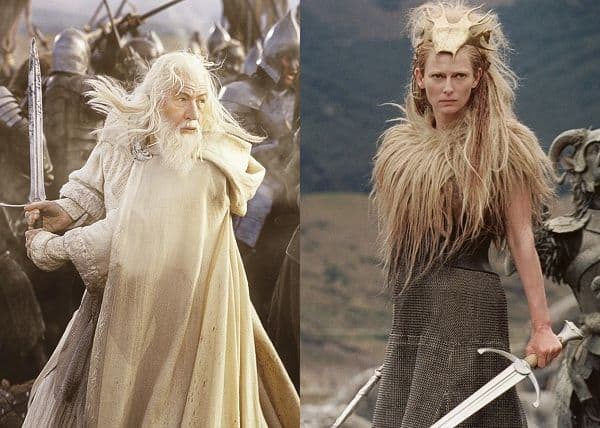
In 2005, the CGI of The Lion, The Witch and the Wardrobe would have been enough to impress. Now it’s showing it’s age a little. (Characters don’t look fully integrated with the background scenery.) But if you enjoy watching strange creatures running towards each other then doing hand-to-hand combat, this movie is for you.
During this big struggle, I started to side with the White Witch. Tilda Swinton has great costume, great hair, her own fake lion’s mane (or maybe it’s meant to be real) and she gets lots of low angle shots which allow her to show her power. Whatever you say about this White Witch, she knows what she wants and she goes for it. She ain’t no bitch of the patriarchy.
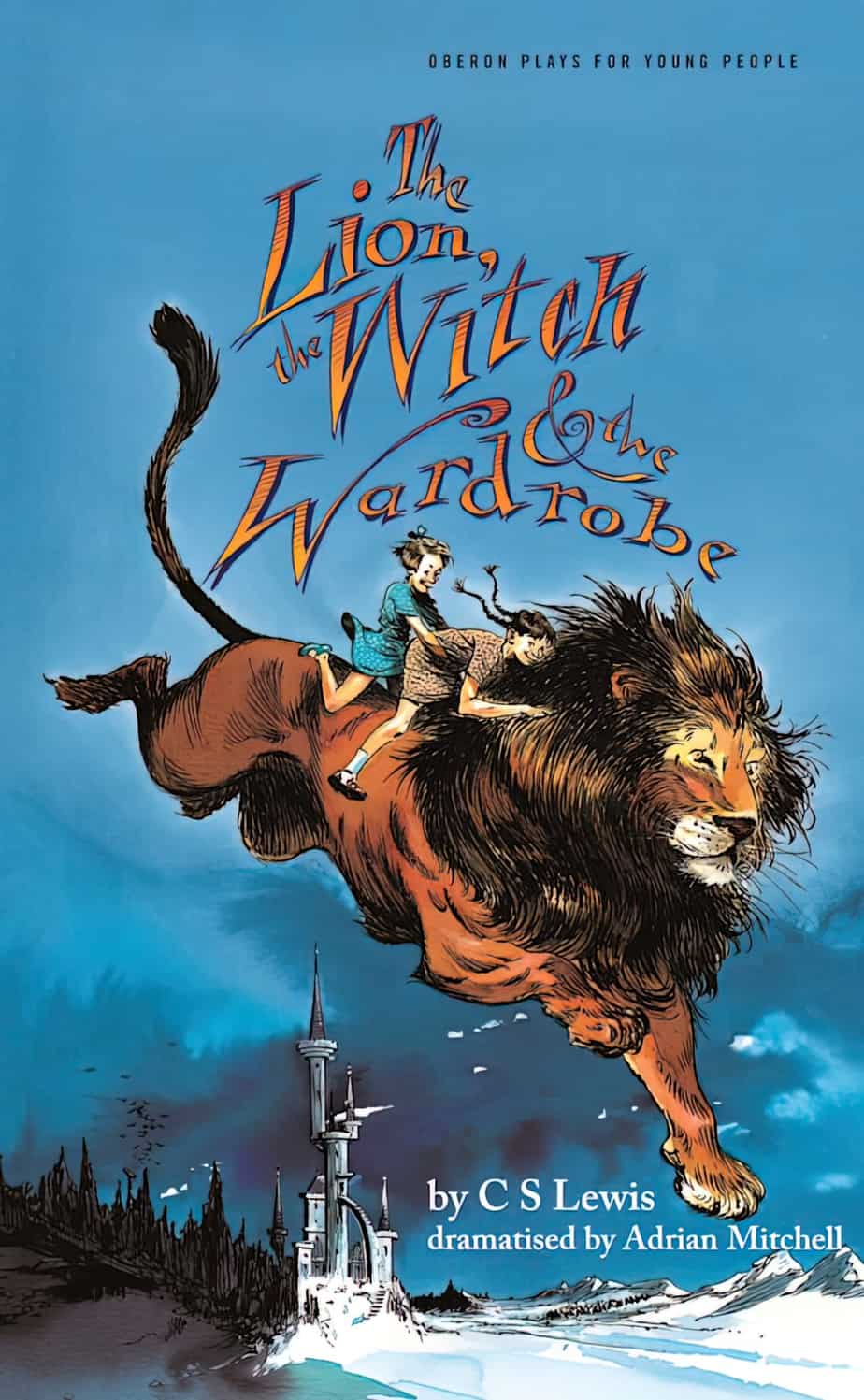
ANAGNORISIS
For Peter, Susan and Lucy, their experience in Narnia is a run-of-the-mill coming-of-age story in which they discover their true power.
But Edmond undergoes a more significant character arc, because he had the furthest to come. He shifts from lying traitor to loyal younger brother who knows his place in the patriarchal hierarchy. Peter says, after saving him during Battle, “When are you going to learn to do as you’re told?” echoing the wrapper story of the London bombings. Even before then, he is shown as acceding power to older brother Peter.
This is seen as a good thing, because now the brothers are less Cain and Abel, more like friends. And friends is always a good thing, right?
Edmond’s arc doesn’t sit right with me. The idea that ‘younger siblings must obey older siblings’ led to significant fraternal bullying in the past. Now, with smaller families and/or more vigilant parenting, sibling hierarchy has mostly disappeared. If older siblings are still in charge it’s because they’re developmentally more advanced, not because of a patrimonial culture which grants permanent, life-long power to eldest children, especially to eldest sons.
NEW SITUATION
When the Pevensie children return to their primary world, ‘the wonderful adventure [in Narnia] has been merely a “time-out”, a picnic.’ Nikolajeva likens these books to a modern computer game, in which the player ‘dies’, but simply plays the game again, consequence free.
The fact is that in most quest stories for children…the protagonists, unlike the hero in myth (or a novice during initiation), are liberated from the necessity to suffer the consequences of their actions. What is described is not the real rite of passage, but merely play or, to follow Bakhtin’s notion, carnival.
Maria Nikolajeva
For more on Nikolajeva’s concept of ‘picnic’ and how that relates to ‘genre’ in children’s literature, see this post.
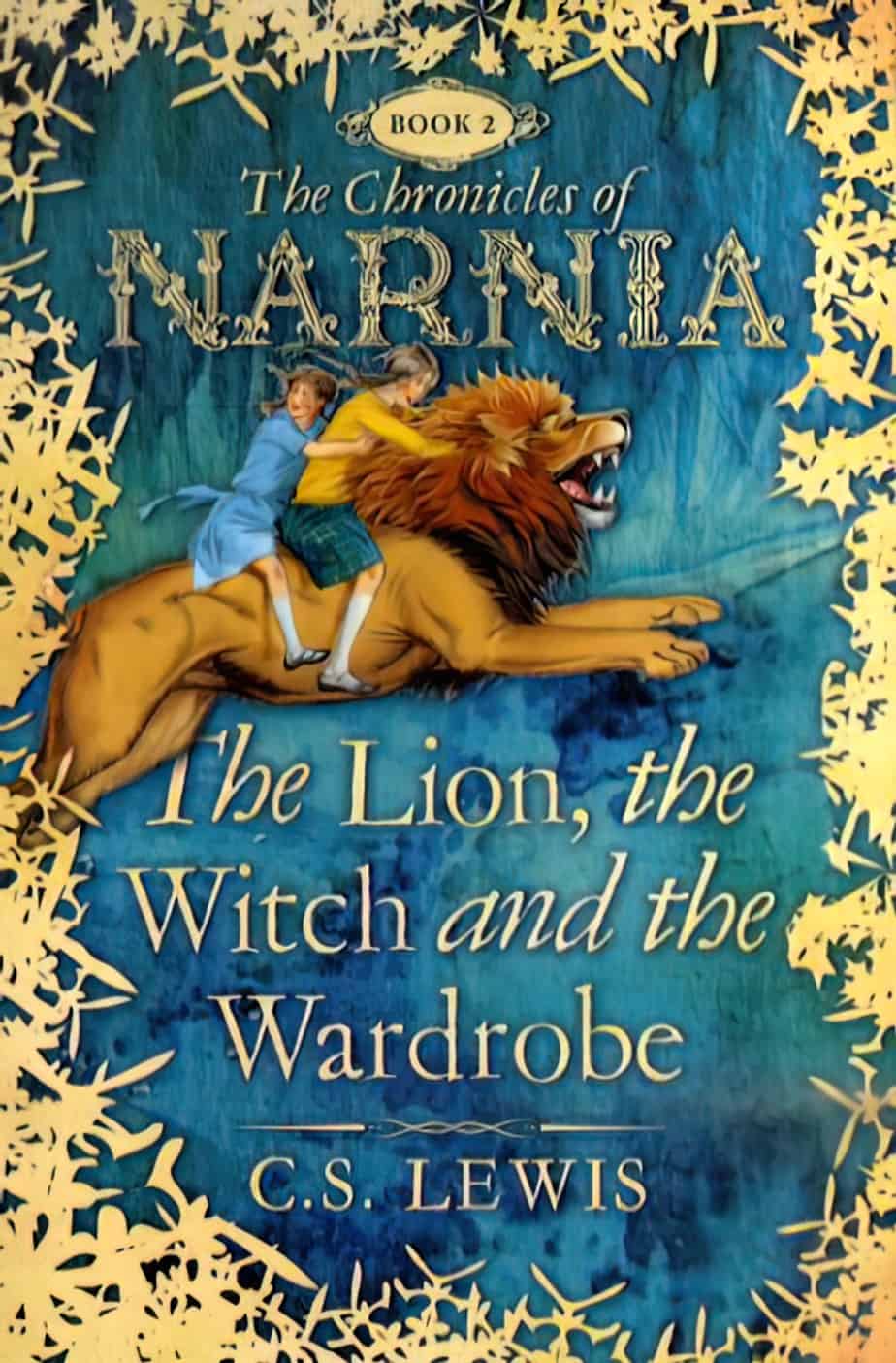
RELATED
Dick Clark’s Unique Flintstone Style House For Sale In Malibu
Secret door inside this wardrobe leads to a Narnia themed playroom
If you’re a Narnia fan, you can listen to the story online here.
